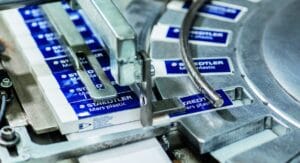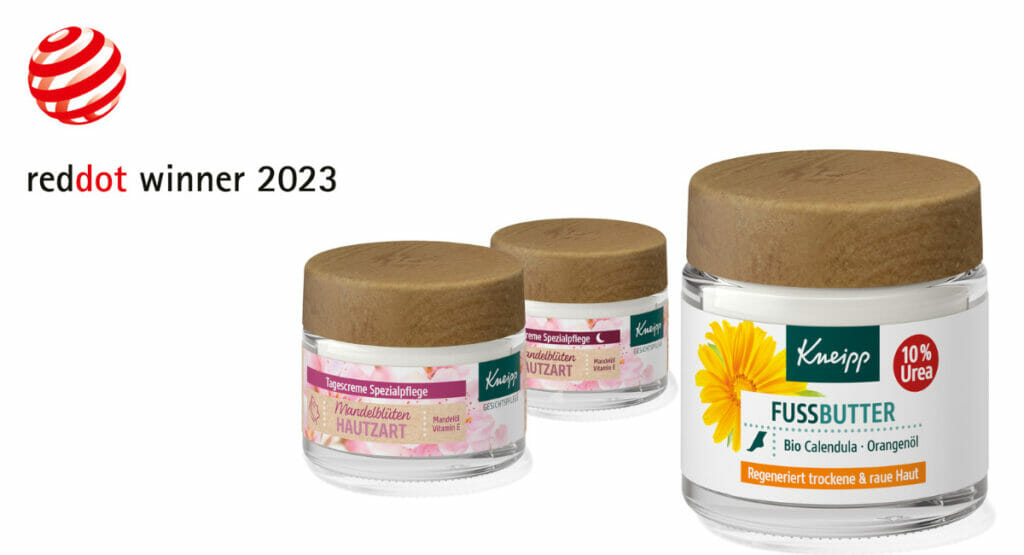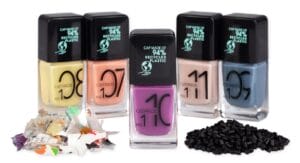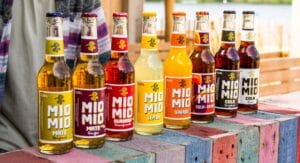
A contract with a handshake is valid
Managing director Tina Gerfer of Wilhelm Rasch Spezielmaschinenfabrik has modernized the company and successfully guided it through difficult times.

Anyone who wants to make cosmetics packaging more sustainable faces various hurdles. Not every option that appears environmentally friendly at first glance is always the most sensible solution. Therefore, it is important to constantly explore new avenues, try out and establish materials and, where necessary, initiate a system change.
Packaging has become a gigantic global problem – whether due to the high consumption of primary resources or the ever-growing problem of petroleum-based plastic waste. Since they are indispensable in the handling of numerous products, a fundamental reevaluation is called for. The EU is also planning to introduce stricter requirements in its new packaging regulation, for example with regard to the use of recycled materials and recyclability.
Companies face challenges when developing new packaging: What is more sustainable? Bath additives in glass bottles? Glass is considered a sustainable material mainly because of its good recycling rate – but the bigger the bottle, the heavier it is and the more CO₂ it produces during transport. Plastic? It’s lighter – but in its conventional form it consists of fossil raw materials that damage our natural habitats and their biodiversity even as they are extracted. The industry is challenged to look for new solutions step by step. For Kneipp, this means thinking in cycles, designing packaging that conserves resources and developing alternatives to petroleum-based materials such as plastic.
When it comes to designing more environmentally friendly packaging, one approach is clear for Kneipp: moving away from plastic. In doing so, Kneipp relies on the use of natural, renewable raw materials such as cork and silphia paper, established materials such as glass, and bio-based plastic alternatives such as paper blend and forewood. Openness is needed here. After all, we don’t know today what the best solution will be tomorrow. It often makes sense to combine different approaches.
One example: the packaging of Kneipp’s almond blossom creams and foot butter, which won the Red Dot Design Award. The lid of these products is made of the forewood material developed by the Stuttgart-based start-up Rezemo, which is produced entirely from renewable raw materials. It contains PEFC-certified wood fibres from forests in southern Germany, which are a by-product of the wood-processing industry, as well as binders made from corn or sugar cane. The jar is made of 35-40 per cent recycled glass, the label of FSC-certified paper with easy-to-wash adhesive, and the inner sealing disc of sugarcane-based polyethylene.

The packaging concept also shows how close cooperation between established cosmetics manufacturers and start-ups from the packaging sector helps to find more sustainable solutions. Rezemo is known for its bio-based and biodegradable coffee capsules made from forewood. When developing the lid for the Kneipp glass jars, one of the questions was whether the material could also be used with a view to the requirements of cosmetic products with a creamy consistency, for example – with a positive outcome.
Sustainability also means reducing the use of raw materials, reusing materials and putting them into a cycle. As part of its sustainability strategy, Kneipp has set itself further goals for its packaging: The company strives for the complete recyclability of all cosmetic packaging and has set itself the ambitious goal of doing without petroleum-based plastics by the end of 2025.
However, establishing a material cycle is not always easy: for example, the wood fibres used in forewood and the plant starch binder used are potentially industrially compostable. In Germany, however, the infrastructure for recycling such new materials with so-called bioplastics is currently lacking. Due to a lack of legal requirements and a low volume, processing is not yet economically viable for recycling companies.
But should we forego a possible resource-saving solution because the system is not yet ready to recycle it? Shouldn’t the industry advocate for just such solutions? Kneipp has a clear stance on this: We do not want to and cannot wait until an optimal result is available at some point. The path to more sustainable solutions is a process of constant improvement. Transformation is only possible on the system side if impulses are given from the market.
Setting precisely such impulses and contributing to the establishment of a circular economy that is open to new materials is part of Kneipp’s commitment to sustainability.

The responsible treatment of nature was already an important concern for the company founder Sebastian Kneipp. This core idea has been anchored in the company since its beginnings. Since 2010, an interdisciplinary sustainability working group has been working on new measures in the areas of production, supply chain, packaging and commitment. In recent years, the company has implemented a number of resource-saving packaging projects. For these and other efforts, Kneipp was awarded a platinum ranking in 2022 by Ecovadis, the world’s largest provider of sustainability ratings, placing it in the top one percent of all companies assessed.
The packaging of Kneipp Almond Blossom Cream and Kneipp Foot Butter shows that it is worth combining different and also new approaches. It is never wrong to look beyond one’s own nose to look for sensible, long-term plastic alternatives. If we can transfer materials into closed loops, we should do so. If that requires a change in the system, we should initiate it. More is always possible.
Author: Isabel Hafner, Head of Packaging Development at Kneipp

Managing director Tina Gerfer of Wilhelm Rasch Spezielmaschinenfabrik has modernized the company and successfully guided it through difficult times.

From primary packaging to final packaging, electric drives play an important role. With a broad portfolio, Nord Drivesystems supports customers.

Labels offer many functions which can get lost due to label removal. PTS assesses labels and cardboard for durability and tamper evidence.

Packaging for decorative cosmetics is very special. The Forum Rezyklat calls for the recyclability of packaging to be taken into account when designing it.

According to a survey conducted by Aktionsforum Glasverpackung 2024 is set to be a highly innovative year for glass packaging.

Sustainability is part of Weleda’s identity. IWK is also contributing to this with its new flexible packaging line for many natural cosmetic products.
